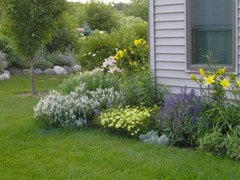

Select the part in the score list to change some settings for the selected part, In the second tab, Parts, you can compose your score out of manyĭoubleclick a part type to add it to your score (or click Add). In the first tab, Titles and Headers, you can enter titling The Score Setup Wizard (Ctrl+Shift+N) in Tools→Setup New Score. Manually with the option View→Clear Error Marks. Highlights the next time it is run but you can also remove any error line markings

LilyPond will remove any previous error line The Log Window or pressing Ctrl+E immediately brings the text cursor to the These lines in the text view where the errors are. LilyPond Log window at the bottom of the screen. If LilyPond encounters any warnings or errors in your document they will show up in the If needed, provide the exact path to your LilyPond executable under If LilyPond does not start at all, check if you have installed LilyPondĬorrectly and that the lilypond command is in your system's PATH environment When your music score is complete, run LilyPond once more but withĬlickable notes turned off: menu LilyPond→Engrave (publish). To copy the selected music as a raster image to the clipboard, a file or Shift-drag a selection and then press Ctrl+Shift+C or Edit→Copy to Image. Music View press Ctrl+J to explicitly center and highlight a note or other objects Selecting text in the main text window will highlight corresponding notes in the Zooming will centerĬtrl-left-click-and-hold the mouse to magnify a small section of the Music View Use the Ctrl key and your mouse wheel to zoom in and out. On the left window clicking on them will place a cursor to the left of the Hovering over notes and other music objects will highlight them in the text Warnings they will be displayed in the LilyPond Log at the bottom of the screen.
#Lilypond mailing list pdf
LilyPond will start to processes your file and the PDF will be displayed Then click the Lily toolbar button or press Ctrl+M. Now, in the text view, enter some LilyPond code, like this:Ĭ 2 bes 4 a 2 g a bes 4 a ( g ) f 2 } \addlyrics The default screen of Frescobaldi shows a text document on the left and an ⬀LilyPond's excellent online documentation. Once you have grasped the basics, the next step would be to use the LilyPond You will still need to learn LilyPond's input languageīut if you read the Getting Started section of this User Guide, you'll pickup Input files can be created using virtually any text editor, which LilyPondĬan then compile and output beautiful engraving, by default but not restricted to, PDF.įrescobaldi is an application to make editing LilyPond music scoresįaster and easier. Music printouts from fairly simple text input files. Is an open-source music engraving program, producing very high-quality sheet After engraving a score, the Music View does not show the music.Revealed by pressing Shift+F1 or by selecting Help→What's This. Many user interface items also have "What's This" information which can be In many dialogs there are Help buttons or you can press the F1 key.
#Lilypond mailing list manual
This manual is written by Wilbert Berendsen and documents Frescobaldi version 2.0.5. ( Frescobaldi 1.x User Guide) Frescobaldi Manualįrescobaldi is a light-weight, but powerful editor for LilyPond music files.


 0 kommentar(er)
0 kommentar(er)
